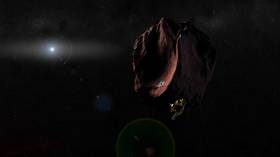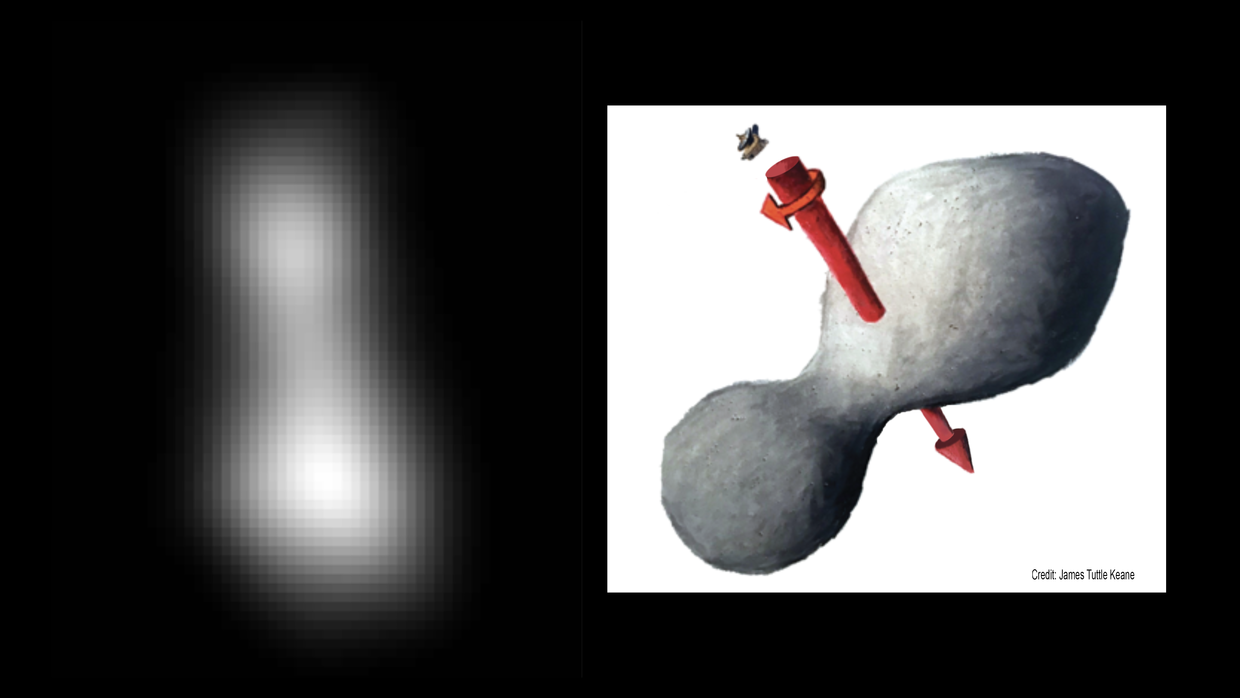Groundbreaking flyby image of Ultima Thule, on edge of our solar system

In an incredible world-first, NASA has released an image from a historic flyby of Ultima Thule, a bowling pin-shaped celestial object at the edge of our solar system some 6 billion kilometers (4 billion miles) away.
The New Horizons spacecraft flew past Ultima from the Kuiper Belt in the early hours of New Year’s Day, making it the “farthest exploration of any world in history - 4 billion miles from the Sun,” said the project’s principal investigator Alan Stern, of the Southwest Research Institute in Boulder, Colorado.
“The data we have look fantastic and we're already learning about Ultima from up close. From here out the data will just get better and better,” Stern added.

READ MORE: Ultima Thule: NASA probe will reach tiny world at edge of solar system on New Year’s Day
The team has begun downloading data from the incredible flyby through the NASA Deep Space Network, and expects to pull in high resolution images and in-depth measurements over the coming months. In the meantime, they have released the closest image taken of Ultima just before the flyby.
Got plans for #NewYears? Watch @NASANewHorizons make history as it reaches #UltimaThule, the farthest object ever explored by a spacecraft. 🛰https://t.co/Jn84tze2HYpic.twitter.com/j4LvhLmNz0
— Johns Hopkins APL (@JHUAPL) December 22, 2018
The New Horizons spacecraft took the image just 2,200 miles (3,500km) from the bowling-pin shaped Ultima, which appears to be spinning end over end, measuring approximately 20 by 10 miles (32 by 16km). However, it is also possible that the image shows two smaller objects orbiting each other.
New Horizons has been a groundbreaking mission for NASA since its launch in 2006. Before exploring the edge of the solar system, the spacecraft was the first to capture Pluto. It’s scheduled to continue exploring the Kuiper Belt until at least 2021.
If you like this story, share it with a friend!














